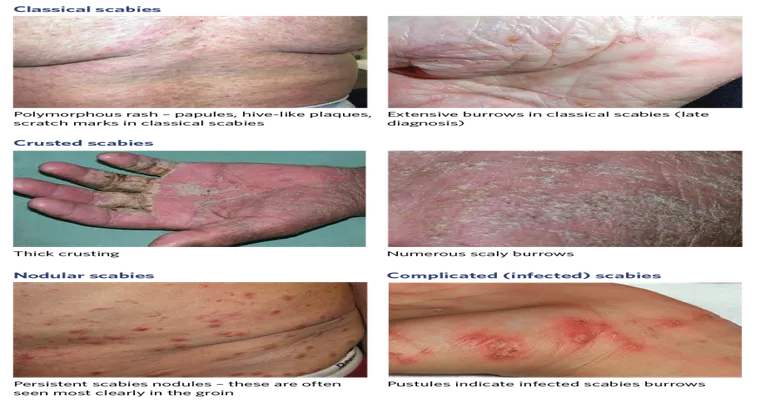Scabies is a highly contagious "skin condition" caused by a tiny mite known as Sarcoptes scabiei. It is particularly prevalent in "long-term care facilities", where close living quarters and shared resources facilitate its rapid spread. This article delves into the causes, symptoms, diagnosis, and treatment of scabies, emphasizing its impact on residents in long-term care settings.
Understanding Scabies
Scabies is caused when the female mite burrows into the skin to lay eggs, leading to intense itching and inflammation. The condition is not limited to any specific age group but is notably common among the elderly and individuals with compromised immune systems residing in "nursing homes" or "assisted living facilities". Factors such as overcrowding, lack of personal hygiene, and shared bedding contribute to the "outbreak of scabies" in these environments.
Symptoms of Scabies
The primary symptom of scabies is severe itching, which often worsens at night. Other symptoms include:
"Rash": A red, bumpy rash may develop, often appearing between the fingers, in the armpits, and around the waist.
"Sores": Scratching the affected areas can lead to secondary infections, resulting in sores.
"Burrows": You may notice small, thin lines on the skin where the mites have burrowed.
Recognizing these symptoms early is crucial, especially in long-term care facilities where the risk of transmission is high.
Diagnosis and Treatment
Diagnosis of scabies is typically made through a "physical examination" and patient history. A healthcare provider may scrape the affected skin to look for mites, eggs, or fecal matter under a microscope.
Treatment usually involves the application of prescription topical medications, such as permethrin cream or crotamiton lotion, to eliminate the mites. In some cases, oral medications may be prescribed. It is essential for all residents and staff in a long-term care facility to be treated simultaneously to prevent reinfestation.
Preventing Scabies Outbreaks
Preventing scabies outbreaks in long-term care facilities requires a multi-faceted approach:
"Education": Staff and residents should be educated about the signs and symptoms of scabies and the importance of hygiene.
"Regular Screening": Periodic screenings can help identify cases early before they spread.
"Prompt Isolation": Residents diagnosed with scabies should be isolated until treatment is completed to minimize transmission.
"Thorough Cleaning": Frequent cleaning of shared spaces and laundering of bedding and clothing can help eliminate potential sources of infection.
Conclusion
Scabies is a common but manageable "skin condition" in "long-term care facilities". Understanding its causes, symptoms, and preventive measures is essential for staff and residents alike. By fostering a culture of awareness and hygiene, facilities can minimize the impact of scabies and ensure a healthier living environment for all. If you suspect scabies in yourself or a loved one, seeking prompt medical advice is crucial for effective treatment and prevention of outbreaks.





